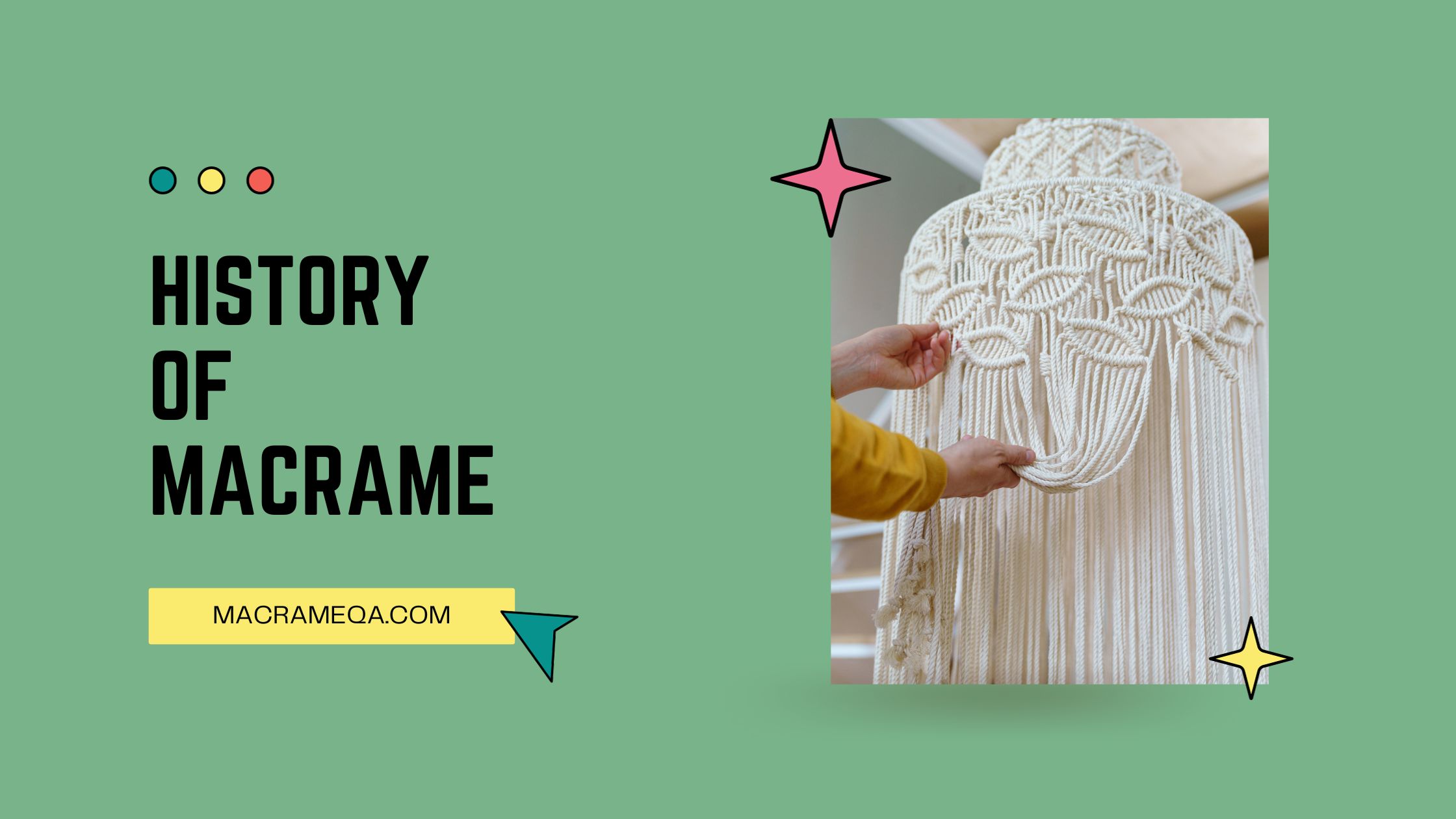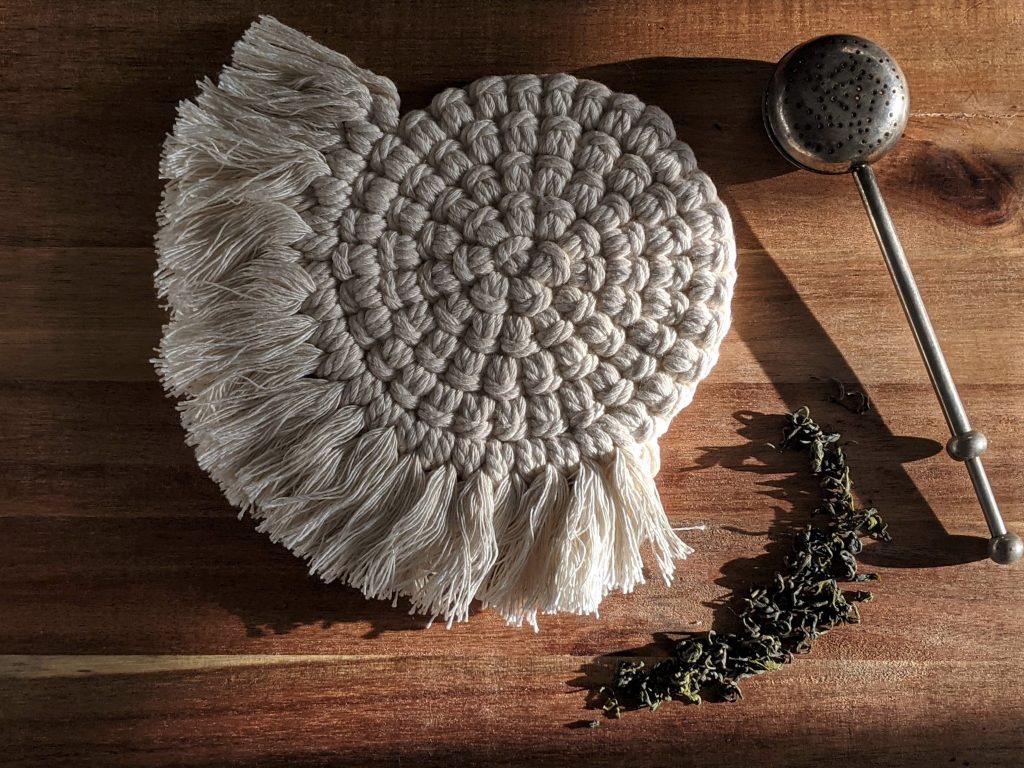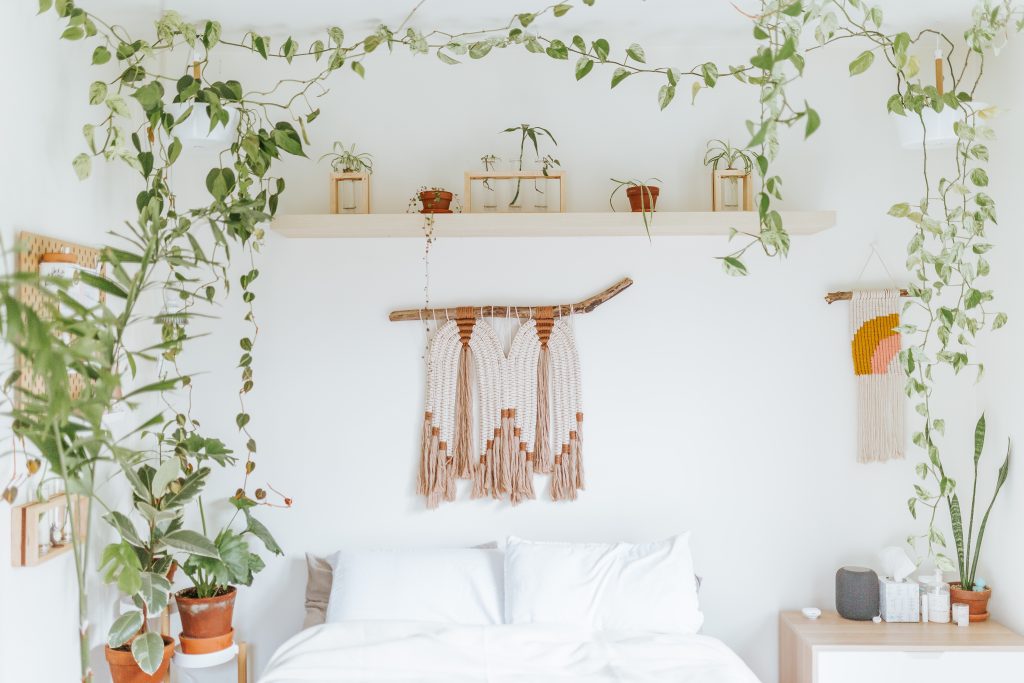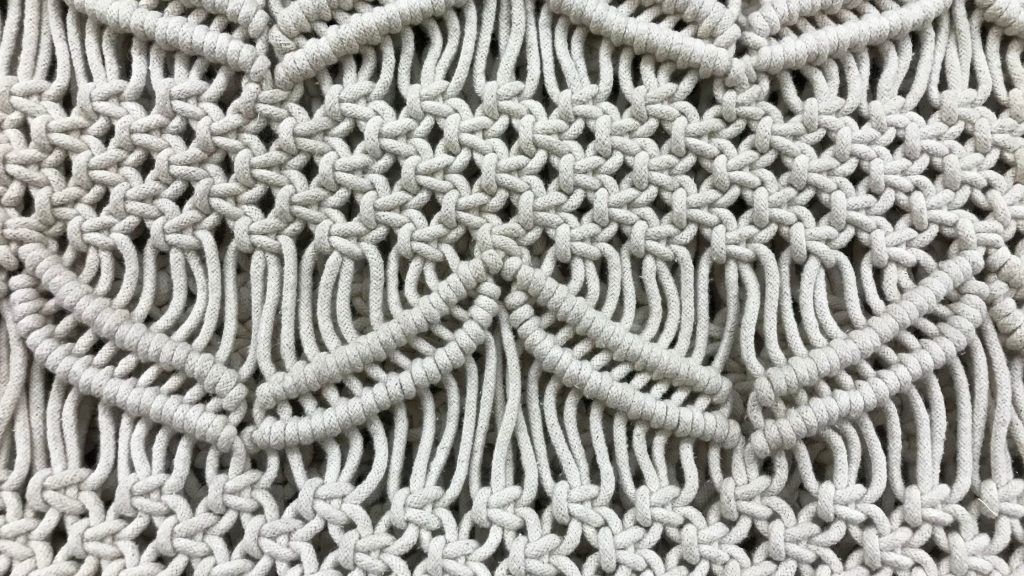Macrame, with its intricate knotting and delicate patterns, has a fascinating history that spans across different cultures. From ancient Egypt to medieval Europe, the art of macrame has been valued and passed down through generations. In this article, we will explore some of the cultures that have embraced macrame and delve into the significance it holds within their traditions and art forms. Prepare to be captivated by the stories and creativity that have shaped the rich history of macrame in different corners of the world.
Africa
Egypt
Egypt is a country located in North Africa with a rich history and culture. When it comes to macrame, Egypt has a significant place in its development and popularity. Macrame is believed to have originated in ancient Egypt and was used to create intricate patterns and designs using knotting techniques. The Egyptians were highly skilled in this art form and used macrame to create decorative and functional pieces such as jewelry, bags, and household items. Today, macrame is still practiced in Egypt, and it continues to be an important aspect of their cultural heritage.
Morocco
Morocco is another African country that has a long history of macrame. The macrame tradition in Morocco dates back centuries and has been passed down through generations. Moroccan artisans are known for their intricate designs and attention to detail. Macrame is used extensively in Moroccan home decor, such as curtains, wall hangings, and rugs. The art form has become an integral part of Moroccan culture, and many artisans continue to preserve and promote this ancient tradition.
Senegal
Senegal, located in West Africa, also has a vibrant macrame tradition. The art of macrame in Senegal is deeply rooted in their cultural heritage and plays a significant role in their daily lives. Senegalese artisans create beautiful macrame pieces using natural materials like jute, cotton, and raffia. Macrame is used to make household items, accessories, and even clothing. It is common to see macrame hammocks, baskets, and wall hangings in Senegalese homes. The intricate knotting techniques and unique designs make Senegalese macrame highly sought after in the global market.
Middle East
Turkey
Turkey, located at the crossroads of Europe and Asia, has a rich history of macrame. Turkish macrame, also known as “Turkish knotting” or “Oya,” has been practiced for centuries. Turkish artisans create stunning macrame lace using silk threads and fine needles. Oya is typically used as decorative trim on clothing, scarves, pillows, and tablecloths. The delicate and elaborate designs make Turkish macrame a highly admired and cherished art form.
Iran
Iran, known for its rich cultural heritage, also has a deep-rooted tradition of macrame. Iranian macrame is characterized by its intricate patterns and vibrant colors. The art form, called “Qasab,” has been practiced for centuries, and its origins can be traced back to the Safavid dynasty in the 16th century. Iranian artisans create beautiful macrame pieces such as wall hangings, room dividers, and decorative panels. The use of intricate knotting techniques and the incorporation of traditional Iranian motifs make Iranian macrame a unique and valued craft.
Lebanon
Lebanon, a country located in the Middle East, also has a history of macrame. Lebanese macrame combines traditional Arab techniques with modern influences, resulting in unique and contemporary designs. Macrame is used to create decorative pieces such as plant hangers, wall hangings, and jewelry. Lebanese artisans often use natural materials like hemp and cotton to create their macrame creations. The art form has gained popularity in recent years, and many young Lebanese artists are incorporating macrame into their modern designs.
Asia
India
India is a country known for its rich cultural heritage and diverse art forms. Macrame has also found its place in Indian culture, particularly in states like Gujarat and Rajasthan. Macrame is known as “sholapith” in Gujarat and is used to create intricate patterns and designs on puja items and decorative pieces. In Rajasthan, macrame is referred to as “bandhani” and is used to create beautiful tie-dye fabrics. The fusion of traditional Indian techniques with macrame has resulted in stunning creations that celebrate both the old and the new.
China
China, with its rich history and craftsmanship, has also embraced macrame. Chinese macrame, known as “zhugexian,” has been practiced for centuries. This art form involves intricate knotting techniques to create decorative pieces, accessories, and even clothing. Chinese macrame often incorporates symbolic motifs and auspicious elements, reflecting the deep cultural significance of the craft. The popularity of macrame in China has spread beyond traditional crafts, with contemporary artists incorporating macrame into their modern designs.
Thailand
Thailand is another Asian country with a rich history of macrame. Thai macrame, known as “kho mut,” has been practiced for generations and is deeply ingrained in Thai culture. Macrame is used to create intricate patterns and designs on traditional Thai costumes, accessories, and household items. Thai macrame often incorporates natural materials like silk, hemp, and cotton to create exquisite pieces. The art form has gained recognition globally, with Thai macrame artists showcasing their skills and cultural heritage to the world.
Europe
Italy
Italy, renowned for its artistic tradition, also has a history of macrame. Macrame, known as “macrame veneziano,” has its roots in Venice and has been practiced since the 16th century. Italian macrame is characterized by its intricate lace-like designs created using fine threads. Macrame lace was highly sought after during the Renaissance period and adorned clothing, curtains, and accessories. Today, Italian macrame continues to be appreciated as a traditional craft, and many artisans specialize in preserving this unique art form.
Spain
Spain, known for its rich cultural heritage and artistic traditions, also has a history of macrame. Spanish macrame, known as “punto de cordón,” has been practiced for centuries and is deeply ingrained in Spanish culture. Macrame is used to create decorative pieces such as wall hangings, curtains, and tablecloths. Spanish macrame often incorporates vibrant colors and intricate knotting techniques, reflecting the passion and creativity of Spanish artisans. The art form has evolved, combining traditional techniques with modern influences.
Ireland
Ireland, a country renowned for its Celtic heritage, also has a connection to macrame. Traditional Irish macrame, known as “Knotted lace,” has its roots in the 16th century. Macrame lace was used to embellish clothing, religious artifacts, and household items. The delicate and intricate designs created using linen thread are a testament to the skill and craftsmanship of Irish artisans. While macrame lace is not as widely practiced today, it still holds a special place in Irish culture and heritage.
South America
Brazil
Brazil, known for its vibrant culture and artistic traditions, has a strong macrame tradition. Macrame is deeply woven into Brazilian culture, especially in coastal regions. Brazilian macrame, known as “balancê,” is characterized by its use of colorful threads and unique knotting techniques. Macrame is used to create decorative pieces such as hammocks, wall hangings, and jewelry. The art form has evolved, incorporating influences from indigenous cultures and other artistic styles. Brazilian macrame remains popular both within the country and internationally.
Peru
Peru, a country with a rich textile tradition, also has a long history of macrame. Macrame in Peru dates back thousands of years to pre-Columbian times. Peruvian artisans create intricate macrame designs using techniques passed down through generations. Macrame is used to create textiles, clothing accessories, and decorative pieces such as wall hangings and plant holders. The use of vibrant colors and traditional motifs makes Peruvian macrame a distinct and highly valued art form.
Argentina
Argentina, known for its vibrant arts and crafts scene, also has a presence in the world of macrame. Argentine macrame is characterized by its use of natural materials like wool, cotton, and leather. Macrame is used to create a variety of pieces, including clothing, accessories, and home decor. Argentine artisans often incorporate traditional elements and techniques into their macrame creations, reflecting the rich cultural heritage of the country. Argentine macrame has gained recognition both locally and internationally for its unique style and craftsmanship.
North America
Indigenous Peoples of North America
The Indigenous Peoples of North America have a rich history of macrame. Macrame has been practiced by various indigenous tribes for centuries, each with its unique styles and techniques. Native American macrame often incorporates natural materials like plant fibers and feathers, reflecting their deep connection to the land. Macrame was used to create functional items such as nets, bags, and clothing, as well as ceremonial pieces with intricate patterns and symbolism. Today, many indigenous artisans continue to practice macrame, preserving their cultural traditions and passing them on to future generations.
Mexico
Mexico, a country with a diverse cultural heritage, also has a presence in the world of macrame. Mexican macrame is characterized by its vibrant colors and intricate designs. Macrame is used to create a wide range of items, including clothing, accessories, home decor, and even traditional Mexican dolls. Mexican artisans often incorporate traditional motifs and symbols into their macrame creations, reflecting the rich history and culture of the country. Macrame has become a significant part of the Mexican craft scene and is appreciated both locally and internationally.
United States
The United States has a thriving macrame community, encompassing a wide range of styles and techniques. Macrame gained popularity in the 1970s during the Bohemian movement and has since continued to evolve and adapt. American macrame artists draw inspiration from various cultural traditions and incorporate modern influences into their creations. Macrame is used to create wall hangings, plant hangers, jewelry, and other decorative items. The art form has gained recognition as a form of self-expression and creativity, with many artists pushing the boundaries and exploring new possibilities within macrame.
Pacific Islands
Micronesia
Micronesia, a region consisting of thousands of small islands in the western Pacific Ocean, also has a macrame tradition. Micronesian macrame, known as “tahool,” is practiced by the indigenous people of the region. Macrame is used to create intricate patterns and designs on clothing, accessories, and household items. The art form is deeply intertwined with Micronesian culture, with each island having its unique style and techniques. Macrame continues to be a significant aspect of their cultural heritage, preserving their traditions and showcasing their craftsmanship.
Polynesia
Polynesia, another group of Pacific Islands, also has a macrame tradition. Polynesian macrame, known as “niho taniwha,” is characterized by its intricate knotting techniques and use of natural materials like coconut fibers and shells. Macrame is used to create elaborate patterns and designs on clothing, jewelry, and ceremonial items. The art form holds cultural and religious significance and is passed down through generations. Polynesian macrame is celebrated for its beauty and craftsmanship, combining traditional techniques with symbolic motifs.
Hawaii
Hawaii, a group of volcanic islands in the Pacific Ocean, has its own distinctive macrame tradition. Hawaiian macrame, known as “knot lei,” is characterized by its use of natural fibers like raffia, palm, and coconut. Macrame is used to create intricate lei, which are traditional Hawaiian garlands worn for special occasions and celebrations. Hawaiian macrame reflects the natural beauty of the islands and the deep connection to the land and sea. The art form continues to be an important part of Hawaiian culture, with many artisans preserving and promoting this unique tradition.
Conclusion
In conclusion, macrame has a rich history and cultural significance in various regions around the world. From the ancient traditions of Egypt and Morocco to the vibrant artistic scenes of Brazil and Mexico, macrame continues to be a cherished craft that showcases the creativity and craftsmanship of different cultures. Whether it is used to create functional items or purely as a form of artistic expression, macrame holds a special place in the hearts of many communities worldwide. By appreciating and learning about the diverse macrame traditions, we can gain a deeper understanding of the cultural richness that exists across the globe.















